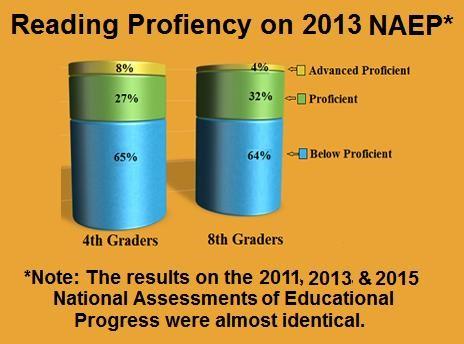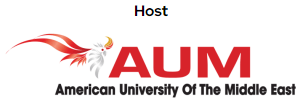STUDENT BREWERS TOAST SUCCESS AT REIMAGINE EDUCATION AWARDS
EDITORIAL OVERVIEW – ISSUE 17
Harriet Isecke is an award-winning educator and author, and the CEO and founder of Readorium. Readorium were selected by Reimagine’s panel of internal and external judges as the K12 Award Gold Winner last December. To find out more about the program, visit https://www.readorium.com/.

The reading comprehension problem in the U.S. is alarming. We can appreciate the depth of the problem when we examine the dismal results of our students on national reading assessments. About two-thirds of our 4th, 8th, and 12th graders, and 85% of economically disadvantaged students, scored below the proficient reading level on the last three national assessments (NCES). U.S. students also rank poorly on science assessments when compared to their counterparts in other developed nations (PISA, 2015). Students who score below the proficient level have difficulty determining a text’s purpose, locating information, making inferences, summarizing text, and interpreting word meaning.
Reading success and success in science are inexorably linked. Science is usually exciting for students in early grades because it is generally hands-on and students enjoy the exploration. However, once students are required to read about science concepts the joy is quickly stripped away. This normally happens when they move on to middle and high school, where they must learn increasingly challenging material. Struggling readers find comprehending science text especially challenging because of the specialized vocabulary and the new concepts presented. Many students become discouraged when they don’t understand the text. Too often they decide that they hate science because it is “boring” or “difficult.”
Instead of “watering down” curricula for students who struggle, we need to differentiate instruction, so that all students can comprehend grade-appropriate information. We must do this to ensure that every child is prepared for the challenges they will undoubtedly face in this global information age. How exactly can this be accomplished? While there have been major breakthroughs in research on effective ways to move the needle on comprehension, this can be a daunting task for teachers who neither have the time nor the resources to devote their attention to new instructional design. This is where well-constructed technology can be very useful.

In order to determine what features well-constructed software must contain, we must first examine the research findings on how best to improve comprehension. According to the Institute of Education Sciences (the research arm of the U.S. Department of Education) there are three basic ways to improve comprehension.
First, students need to learn and practice the proficient reading strategies that will enable them to become thoughtful, analytical readers. This type of strategic thinking needs to be practiced within many different contexts. Next, students need to master the word-learning skills that will enable them to infer the meaning of new academic vocabulary. Finally, students need access to text that is directed at their independent reading levels, and they need to learn how to pinpoint places in the text where they become confused. If students learn how to use context clues to clarify points of confusion, it will help prevent them from becoming frustrated and giving up.
Students at all skill levels would benefit greatly from carefully constructed software that allows them access to the same rigorous content. This can only be accomplished if they receive the support and leveled text they need as they read. When choosing appropriate science software there are several questions that we need to keep in mind.
- Is the program intuitive and easy for students to use independently?
- Is it visually appealing and motivating?
- Does the software contain grade-appropriate content at different readability levels? Is all text clear, interesting, and accurate?
- Do the text levels and the supports provided automatically adapt to each student’s changing needs?
- Are students taught the strategies and word-learning skills needed to comprehend the text presented?
- Are students required to interact with the text, and are they supported in these interactions?
- Does the program contain clear graphics and video clips to clarify meaning?
- Is comprehension checked continually?
- Do students receive timely and appropriate feedback?
- Is independence fostered? Is the assistance students get scaffolded so that they do not depend on it as a crutch
- Do teachers and administrators receive the data needed to make instructional decisions?
- Are any additional resources provided to educators based on student data so that they can target instruction effectively?
It would be easy to argue that science is the most important subject students learn. When students understand science, they understand how and why the world works. When they understand science, they learn to think critically, and they can test what they observe. We live in a rapidly changing world, and we desperately need problem- solvers who can help us meet the challenges we face now and will certainly encounter in the future. However, students cannot understand science and become self-actualized learners unless they learn to read science text. It is our responsibility as educators to target instruction so all students can be successful. Using carefully constructed adaptive technology to increase science comprehension can help us achieve just that!
Being an educator runs in my blood. In fact, I come from a long line of educators, and I’ve been involved with public schools as a teacher, administrator, and consultant for over 40 years. My expertise is in literacy instruction, and I’ve presented at the International Literacy Conference three times. Over the years, I’ve become increasingly concerned about the ever-widening educational gap.
In 2010, Mtelegence received the first of three innovative research grants from the US Department of Education to develop Readorium, an interactive web-based comprehension program. Students in grades 3-8 learn the strategies and word-learning techniques needed to become thoughtful, analytical readers. They practice these skills as they read chapter books based on International, National, and State Science Standards.
What makes Readorium really distinctive is that it enables all students to access and understand the same rich information. All text is written at 10-12 readability levels, and each book has a mentor who provides personalized assistance. Most importantly, the text and scaffolded supports automatically adapt to students as they proceed. Thus, all students — from high-fliers, to strivers, to English Learners—can access the same grade-appropriate content since instruction is continually differentiated based on their responses.
Student motivation and teacher input are also essential. To make the program truly motivating, we asked students what features would engage them in reading. Based on thousands of suggestions, we gamified Readorium and added strategy raps, challenges, and animations. Since teachers are the most significant input in any learning equation, they receive real-time score reports and resources to target classroom instruction based on this data.
Readorium was field-tested three times to measure effectiveness. More than 2,000 students from diverse populations participated in these field tests. The valid and reliable Diagnostic Online Reading Assessment by LetsGoLearn was used as the pre and post test measure. In each field test, students who completed 12 or more Readorium books averaged a full year’s gain in nonfiction comprehension, and the more books they read, the greater the gain.
Readorium is now working with the New York Institute of Technology (NYIT) on adding a student research component (through a gamified technology system) that places kids into an environment where research is
essential. Students will investigate answers to “big” science questions and try to solve science mysteries related to the Readorium books they have read. Readorium will work with professors and game designers from NYIT to create this immersive approach, using mixed reality technologies, that will not only teach students the research skills needed study real-world, relevant science questions but will also show them the value of this research. For example, they may explore questions such as: We have three days to figure out what to eat in this rainforest before food runs out. What are all these bones doing on this alien planet, and what does this mean for us? Why are all the crops dying in this country’s farmland, and what can we do about it?
Readorium has won many awards, such as the 2016 CODiE Award for Best Reading Solution, but its greatest honor was winning this year’s Reimagine Education gold medal in the K-12 category. This was the second-most competitive of 17 award categories, and in total, over 1,000 submissions were received for the competition overall. Reimagine Education has been instrumental in supporting innovative programs, such as Readorium, through its “Oscars” of Education. The fact that Reimagine promotes personalized, motivating, engaging learning experiences has had a huge impact on the development of innovative solutions that will prepare students for the challenges that lie ahead.

